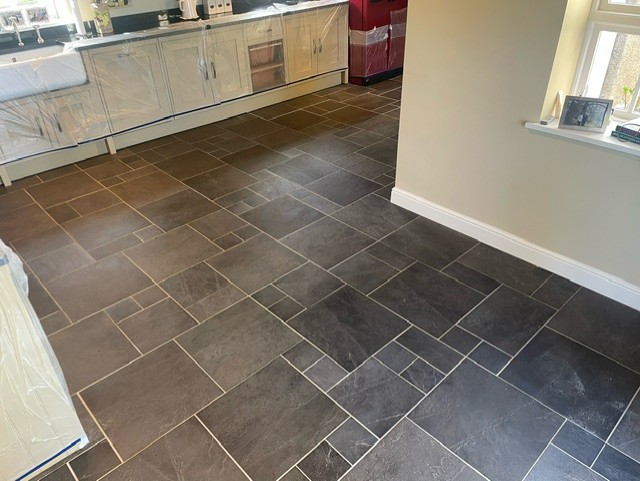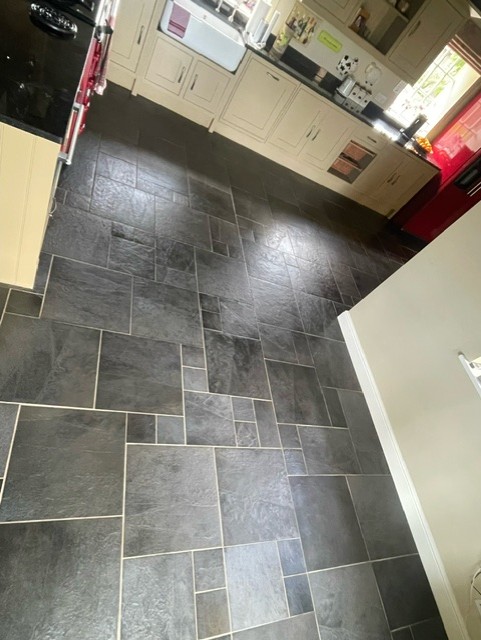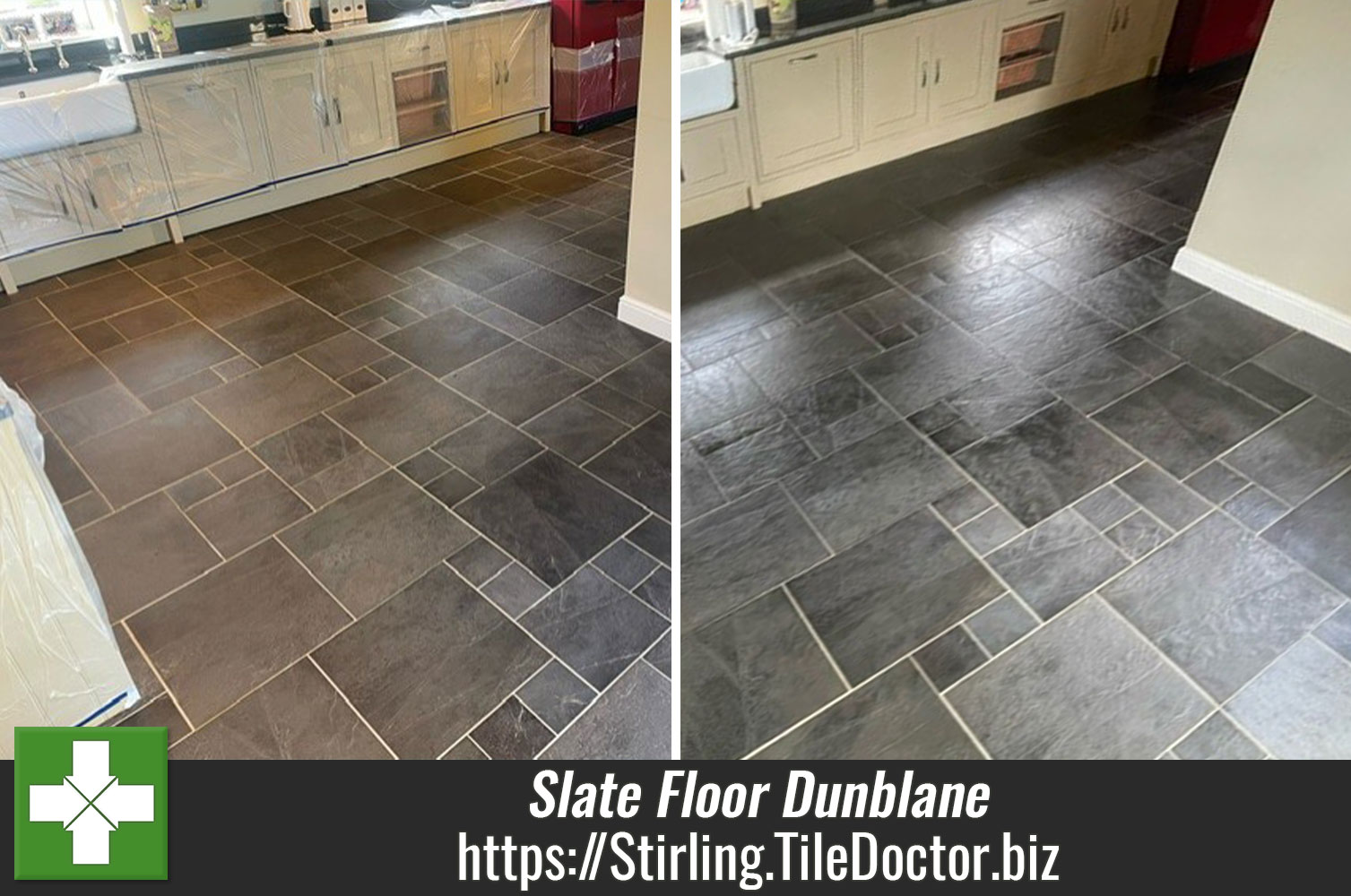Stripping Sealed from Slate with Tile Doctor Remove and Go in Dunblane Stirling
Due to scheduling conflicts, I was unable to survey this Slate tiled floor at a property in Dunblane. This was mainly due to the client who didn’t live at the property and was only available on certain dates. As a result, I requested detailed photos and measurements of the kitchen, which allowed me to assess the tiles and provide a quote for renovating the floor. This is not ideal, especially for old floors but in this case, I was happy this would be a straightforward clean and seal.
The proposed work would take two days and involve removing the remaining old sealer, deep cleaning the slate, and then resealing the tiles with a matte finish sealer. It’s important to remove all the old sealer before applying new as busier parts of the floor will wear the most resulting in different levels of sealant across the floor.
I worked out a detailed quote for the renovation, which was accepted, and dates agreed to complete the work.
Cleaning a Slate Tiled Kitchen Floor
Work began by adding protection to the kitchen units, I use a lot of water during the cleaning process and didn’t want to mark them in anyway. Once that was done a strong dilution of Tile Doctor Remove and Go was applied to the floor and left to soak into the stone for ten minutes. This gives it time to breakdown the old coatings and being an alkaline product its safe for use on all types of stone or tile. A 200-grit diamond pad fitted to a rotary floor buffer was then applied to the tiles and work the solution into the stone. This process strips off the remaining sealer and pulls the dirt out of the pores of the stone.

This was then followed with grout cleaning brush along the grout lines and corners to ensure I reached all the areas which needed to be cleaned. The floor was then thoroughly rinsed, and the soiled solution was removed using a wet vacuum.
Next, I treated the floor with an acid wash using Tile Doctor Grout Clean-up. This product is effective for removing grout smears and other mineral deposits, it also neutralises the pH level of the floor after the use of the alkaline Tile Doctor Remove and Go. After using the rotary cleaning machine and black pad to work the solution into the tiles I rinsed the floor and extracted all the soiling with the wet vacuum.
Sealing a Slate Tiled Kitchen Floor
The floor was left to dry overnight and returned the next day to apply the sealer. Before doing so, I checked the moisture level of the tiles with a damp meter to check they had dried sufficiently. This step is crucial, as applying sealer to a damp floor can lead to an inconsistent finish.
The sealer chosen for the Slate tiles was Tile Doctors Colour Grow. This was chosen as the client wanted a matt finish and was keen to bring out the natural colours in the Slate. Two coats of sealer were applied to protect the floor from ingrained dirt. The first coat was applied and after 5 minutes the excess sealer was removed with a white cotton cloth. After half an hour passed the second coat was applied and again the excess sealer was removed. A water test was completed after 2 hours to ensure the sealer had worked.

Once done the Slate tiles looked so much brighter and the grout was consistently clean. My client was delighted with the finished appearance of the Slate tiles as the true colour was again visible.
Before leaving we discussed aftercare cleaning and the importance of avoiding strong cleaning products which can damage the sealer. Because of this I always recommend Tile Doctor Neutral Tile Cleaner which is pH neutral.
Source: Slate Floor Tile Cleaning and Renovation service in Dunblane Stirling
